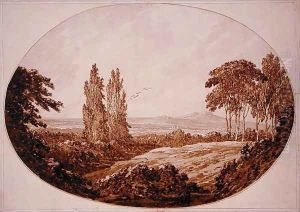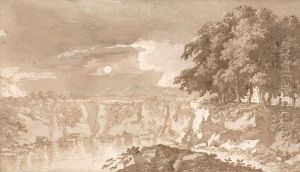Richard Cooper Paintings
Richard Cooper was a British engraver and painter, primarily remembered for his engravings and his role in the Scottish art scene. Born in 1740, Cooper came from an artistic background; his father, Richard Cooper Senior, was also an engraver, which likely influenced his career choice. While not as widely recognized as some of his contemporaries, Cooper played an important role in the development of British engraving and contributed to the dissemination of artistic ideas and images through his prints.
Cooper's training began under his father's guidance, and he further honed his skills in London, where he was exposed to the thriving art community and the works of eminent artists of the time. He developed a particular expertise in line engraving, a technique that allowed for precise, detailed work and was well suited to the reproduction of paintings.
In the 1760s, Cooper moved to Edinburgh, where he became an influential figure in the Scottish art world. He was closely associated with the Foulis Academy in Glasgow, an institution founded by the Foulis brothers, which aimed to promote the arts in Scotland. During his time in Edinburgh, Cooper produced engravings after the Old Masters and contemporary artists, contributing to the cultural exchange between Britain and the continent.
Cooper's engravings were characterized by their clarity, attention to detail, and faithful reproduction of the original artworks. His work included a wide range of subjects, from portraiture to landscapes, and he was particularly adept at capturing the nuances of light and shadow, a skill that added depth and realism to his prints.
Despite his contributions to the arts, Richard Cooper remains a relatively obscure figure in art history. He did not achieve the fame of some of his peers, and much of his work has been overshadowed by that of more prominent artists. Nevertheless, his engravings have been collected and studied by those with an interest in the history of printmaking and the dissemination of visual culture in the 18th century.
Richard Cooper's death in 1822 marked the end of a career that spanned several decades and reflected the changing tastes and styles of the late Georgian period. His legacy lives on through his prints, which continue to be appreciated by connoisseurs and historians for their technical proficiency and their role in the artistic exchange of the era.

